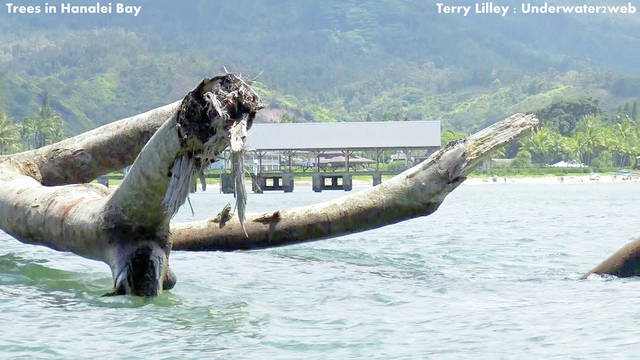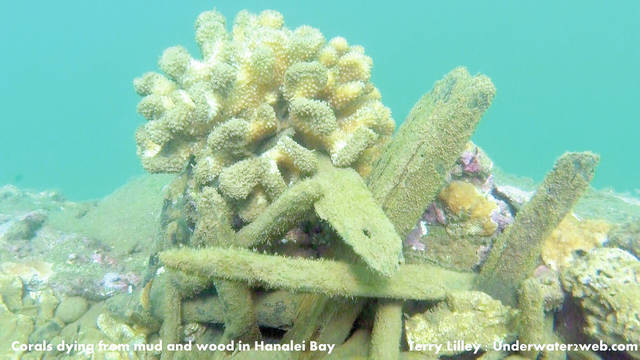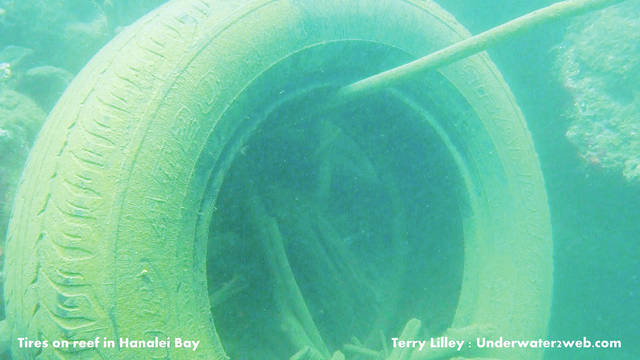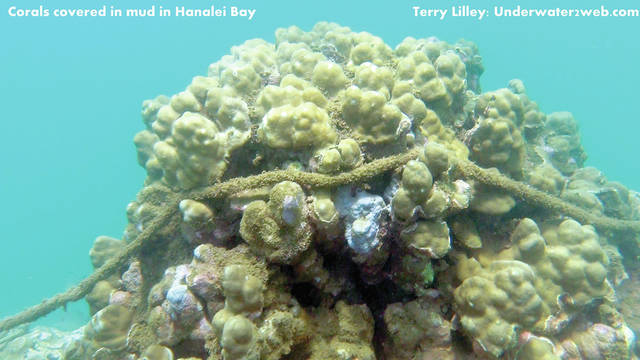HANALEI — Mud is smothering the coral in Hanalei Bay, according to one resident who explored the reef there Saturday.
The state Department of Land and Natural Resources Division of Aquatic Resources hasn’t been able to get in the water in many of the flood-impacted areas on Kauai to check on the coral.
“Their work is not considered an emergency nature, so like most, they don’t have any access currently,” said Dan Dennison, DLNR spokesman.
He continued: “Haena and other areas are scheduled for the regular reef assessments in July, so more information then.”
Hanalei resident Terry Lilley has been underwater documenting what he says is a 95 percent mud coverage over the corals in the reef.
“I dove the area in the bowl, which is a popular surf spot, and I have 10 years of video there tracking the coral growth,” Lilley said. “Corals were dead, covered in a thick coat of mud and wood.”
Lilley said he has tests from the mud in the Hanalei River that show high heavy metal counts, though the state Department of Health hasn’t tested the mud or sand for contaminants.
Lilley said pictures he took from the bay show a mud-soaked reef littered with wood and tires, pieces of pipe and other trash washed into the bay with the floods.
“The whole area looks just horrible,” he said.
Since the April flooding, county and state officials, private companies and residents have been working together to clean up houses that collapsed, streets that were destroyed and businesses that were drenched.
Black Pot Beach Park was torn in half when the Hanalei River flooded during the rains, with a large sinkhole breaking apart Weke Road just before the beach park.
The restrooms that once stood at Black Pot Beach Park were toppled over in the flood and are now demolished. Three vehicles deposited into the park and buried in mud have been removed.
It could be months before rebuilding of Weke Road starts. The county is in the permitting process. The cost, specifications and other details will be announced shortly.
“Once the permits are issued, we will begin construction. The permitting process may take up to three months,” said Lyle Tabata, acting county engineer.






Like in most cases, the State only addresses a problem when it becomes so large and unmanageable, it’s cost $millions to address. When in fact it would be much cheaper to address the problem before it gets out of hand. It’s like saving a few pennies and not giving the sick patient a vaccination shot, only to realize he gets much worst and requires extensive medical care.
This source has an easily researched history of inaccurate sensationalism. This source does not meet basic journalistic standards. Yet time and time again, this source is quoted in this newspaper!
Common sense will tell you that all that thousands, if not millions of tons of rock, mud from over 14 separate landslides end up in the ocean. And that the North Shore has extensive flat reefs hundreds of yards wide, it is quite possible that all those sediment end up covering the reefs.